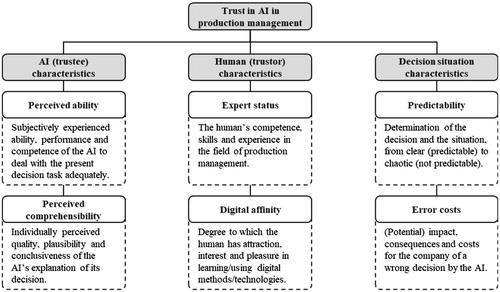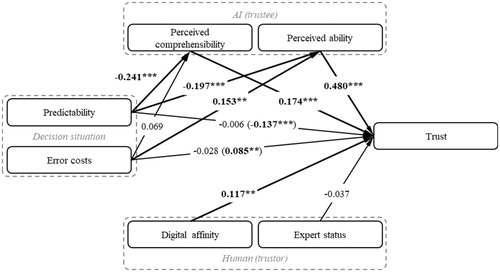Figures & data
Table 1. Guiding questions for the expert interviews.
Figure 1. First potential antecedents for trust in AI within production management.

Figure 2. Model of hypotheses under investigation.

Table 2. Measurements to operationalise the variables.
Table 3. Evaluation of measurement model.
Table 4. Evaluation of Fornell-Larcker criterion.
Table 5. Evaluation of cross-loadings.
Table 6. Evaluation of heterotrait-monotrait ratio (HTMT).
Table 7. Evaluation of structural model with trust as independent variable.
Figure 3. Coefficients of the structural model.

Table 8. Results of hypothesis testing.
